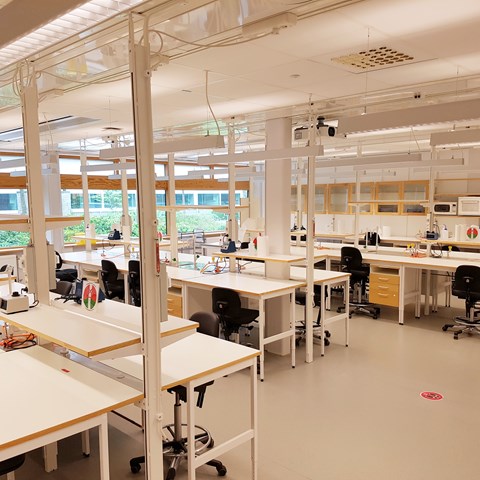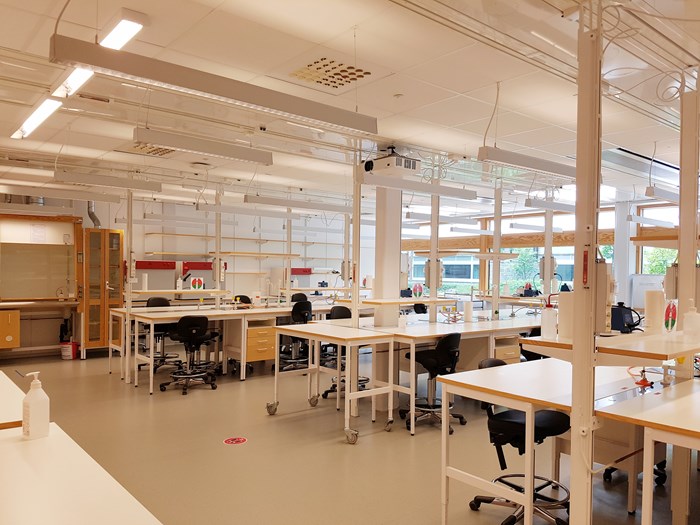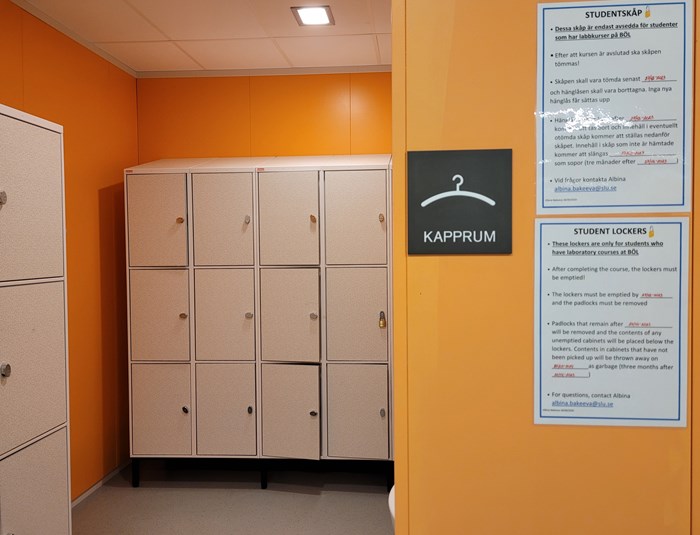Information for students

Welcome to Biological course laboratories or BÖL (in Swedish)!
Capacity and equipment
Here you will find useful information about facilities, safety and rules.
There are three practical laboratories (BÖL 1, 2 and 3), chemical, autoclave, medium preparation, gel electrophorese rooms.
The laboratories fully equipped for practical education and have
- Fume hoods and biological safety cabinets
- Microscopes
- Spectrophotometers
- Autoclaves
- Scales
- Pipettes
- Consumable materials (Eppendorfs, Petri dishes, etc.)
Before the lab starts
Outerwear
Outerwear and bags cannot be brought into the laboratory during classes!
Students' lockers
Lockers are available outside the course lab. You need to bring your own padlock. NOTE! You can use the locker only during the course. Padlocks that are left after the course will be cut later.
Laboratory coats
Lab coats are COMPULSORY to all laboratory courses. Students without laboratory clothing are not allowed in the laboratories. You should buy and bring your own lab coat.
Entrance to Biocentrum
The main entrance to the Biocentrum is open during the day, until 17.00. Getting further into the department's premises requires a card, so if you need to meet one of the teachers, you must book a meeting beforehand.
Students' kitchens
Cooking can be arranged in the students' kitchens on the same floor 2, outside BÖL corridors; you can find refrigerators and microwaves there.
Car parking
On the territory near the BioCentre there are free parking spaces, except for places with engine heater sockets.
Safety and rules
Rules
Read Laboratory rules and routines. You can also find them in the three BÖL main labs.
Risks
Identify the hazards associated with your laboratory activities and assess the risks. Use SLU's chemical handling system 'Klara' to find information on chemical risks and personal protection. Here search by chemical product name, CAS number or article number.
Environmental policy
SLU’s environmental policy and Environmental certification ISO 14001 of BioCenter, goals and the environmental handbook can be found here.
During and after the lab
Lab preparations
Read through all the instructions for the laboratory exercise, experiment before starting any practical work. Think through all the stages of the work in detail so that you understand the aim of the experiment and how it can be carried out.
Accidents
The course-responsible teachers must always be informed of any accidents occurring during laboratory exercises.
How do you use an automatic pipette?
Check a video How to pipette correctly. Remember never turn the pipette upside down!
Lost and found
If you forgot, found or have some questions about the laboratories, contact Albina Bakeeva.
Students' lockers
Empty the lockers after completing the course. After each semester, any padlock left behind will be cut open and wasted.


